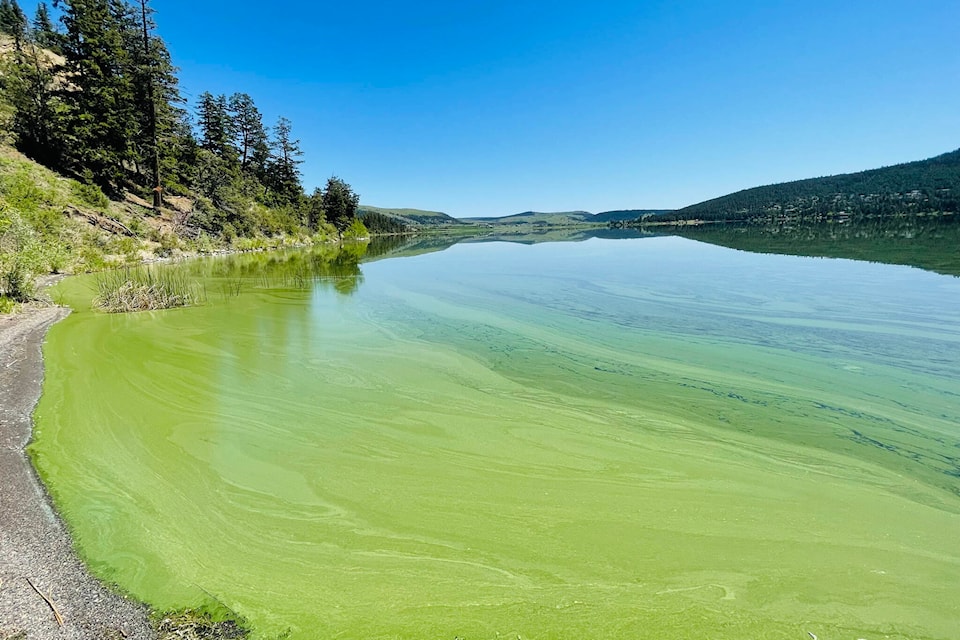As summer weather starts to heat up lakes in B.C.’s Interior, Interior Health has issued an information bulletin on algae blooms.
Blue-green algae blooms, or cyanobacteria, can seriously affect marine life, depleting oxygen from fish and blocking sunlight from reaching creatures living at the surface, but it can also impact people’s and pet’s health.
“It’s that time of year when we can see increased cyanobacteria, or blue-green algae, blooms on lakes. These blooms tend to stay on the water surface and may have a leafy scent. Sometimes blooms can be toxic for those who come in contact with the water. My advice is for users to use common sense, and avoid contact or consuming water if you suspect there is a cyanobacteria bloom,” noted Interior Health medical health officer Dr. Silvina Mema.
While cyanobacteria can be present through winter, it is most prominent during the spring and summer when the weather is warmer.
Algae blooms come in many shapes and sizes, and harmful cyanobacteria blooms can look very similar to harmless algae blooms.
The only way to definitively identify a cyanobacteria or algae bloom is through microscopic analysis of cells at a certified laboratory.
Things to avoid:
Avoid lakes where cyanobacteria blooms are present.
Avoid all direct contact with the bloom. If contact is made, rinse your body with clean water.
Consider alternative sources of drinking water if yours is impacted by a cyanobacteria bloom.
Common symptoms
Here are some of the most common symptoms associated with cyanobacteria: Headaches, nausea, fever, sore throat, dizziness, stomach cramps, diarrhea, abdominal pain, vomiting, muscle aches, mouth ulcers, rashes and rritation of eyes and ears.
If you’re showing any of the symptoms listed and believe they may be from exposure to green-blue algae, see your health-care provider.
Report algae blooms online with the province at BC Algae Watch. You can use tools on BC Algae Watch to identify if a bloom is likely cyanobacteria.
Do you have a comment about this story? email:
editor@wltribune.com
Like us on Facebook and follow us on Twitter.
